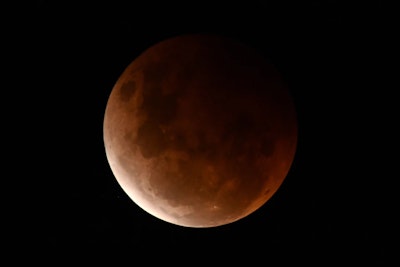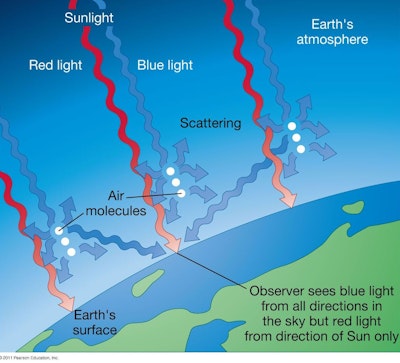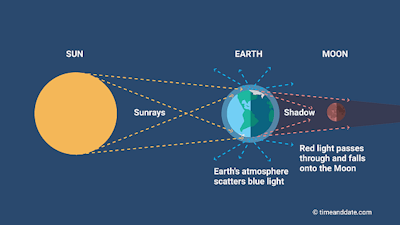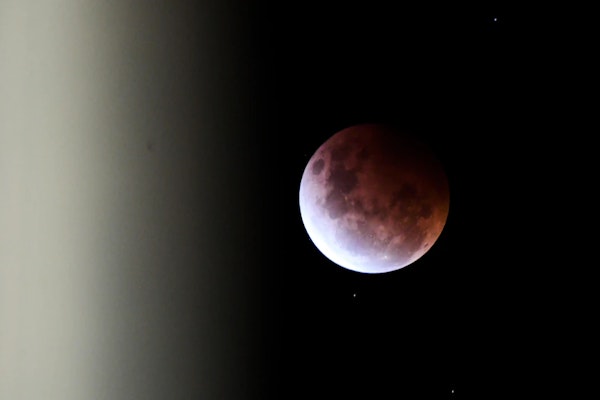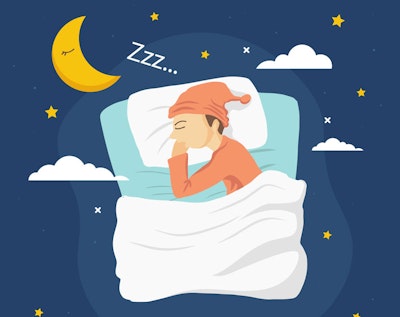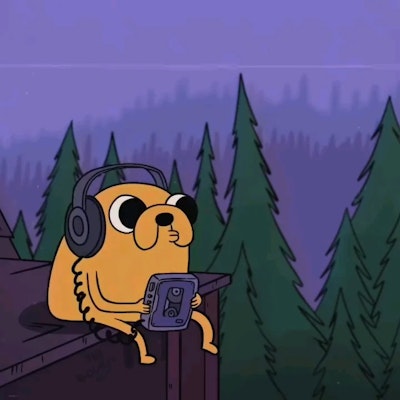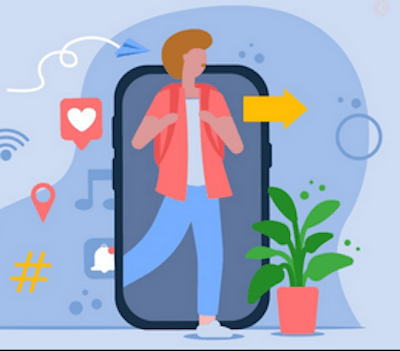Welcome back to another edition of SCISOC's fortnightly newsletter PRISM! In this week's edition of PRISM, we come bearing the news of an exciting new event, hosted in collaboration with MedSciSoc! We also discuss the science behind blood moons in order to celebrate our first (and last) blood moon of the year in late May. In our Fun Corner, we present a guide on how to pull an all-nighter (not that most of our readers need one). While not recommended, we're here to bring some hopefully less damaging practices you can incorporate into your all-nighter routines. Sit down, get relaxed and have fun! |
|
|
SCISOC X MedSciSoc Sports Tournament Already feeling burnt out from all your week 1 grind for your HD WAM? Well, SCISOC has got your back! Start off the term by joining us at the SCISOC x MedSciSoc sports tournament! Unleash your inner Messi, LeBron James, and Federer as well as meeting some new friends along the way. What else can be a better gift for yourself than treating your hard work for the term with a good time with your friends? Location: TBA Time: Week 3 Term 2
Keep up to date with our latest events and more details by following us on our SCISOC Facebook page! |
| |
|
| Official SCISOC TikTok Is your morning scroll through TikTok just not doing it for you anymore? Are you tired of the same repetitive content you see daily on your For You page? Not to worry! UNSW SCISOC is proud to finally unveil our official TikTok account! Here, we'll be posting some fun videos where you can get to know us more and see how SCISOC is...behind the scenes 📸. Follow us @unswscisoc on TikTok, and click here to watch our first upload. Hope to see you around soon! |
|
|
Since the beginning of time, natural phenomena regarding the skies have always piqued humanity’s interest and led to a wide range of speculation about their occurrences and meanings. For example, stories were born featuring gods, demons, and other mythical creatures threatening to devour the moon, and people would gather and pray, giving offerings to ward off these beings. Others believed that natural phenomena had religious meaning and gave omens, such as the Book of Joel which stated a blood moon signals the beginning of the end. Thankfully, we’re all still around to read this newsletter! |
|
|
| Cast your minds back to the 26th of May, where we saw one kind of natural phenomenon — a blood moon. More commonly referred to as a total lunar eclipse, a blood moon occurs when the earth comes directly between the moon and the sun, causing its shadow to fully cover the moon. The name ‘blood moon’ comes from the reddish tinge the moon takes on when it is fully eclipsed. |
|
|
| So, why exactly does the moon become red?
|
Well, a total lunar eclipse happens when the moon travels through the earth’s umbra — part of the earth’s shadow that covers all direct light — blocking all direct sunlight from reaching the moon’s surface. Some indirect light still reaches the moon through the earth’s atmosphere, bathing the moon in a reddish, orange or yellow glow. As the sun’s rays pass through Earth’s atmosphere, colours close to violet in the light spectrum are filtered out by a phenomenon called Rayleigh Scattering. The colours least affected by this, namely red, are shown on the fully eclipsed moon’s surface. |
|
|
Hence, in the same way that the sky is blue, sunsets and lunar eclipses are red. As another example of Rayleigh Scattering, when sunlight passes through air molecules in the day, the blue component of the visible light spectrum causes charged particles to oscillate quicker than the red section of the spectrum. The quicker the oscillation, the greater the amount of scattered light produced, hence explaining the blue sky. However, as sunlight must enter much more atmosphere at night until it reaches Earth, there are more oxygen and nitrogen particles to scatter the light and the blue and violet light is scattered away, leaving behind colours such as yellow, orange, and red. |
|
|
So if you were one of the millions who were staring into the night sky in May and trying your best to take photos of it (and coming out with a 360p blurry picture at most), we hope you learnt and understood the science behind this incredible sight, or found it somewhat a-moon-sing! |
|
|
Now that we are well into the second trimester, we hope that you are all caught up with lectures and are prepared for upcoming assignments. However, if you are like the majority of uni students and find yourself crippled with procrastination, then this is the guide for you. Sometimes those all-too-familiar, dreaded all-nighters are unavoidable, so here are some tips and tricks to help you cram your way productively through the night. |
|
|
| Believe it or not, banking sleep beforehand is one of the best ways to stay productive when pulling an all-nighter. This might be taking a nap in the afternoon or having an extra two hours of sleep yesterday. A 1991 study was conducted at Wright State University and it was found that subjects with an extra nap could work through the night with a greater alertness than those who did not and that the performance was proportional to the length of the nap. However, its effects do not last for over two days without sleep so make sure to get plenty of sleep the following day. |
|
|
Do not let the stress get the best of you. Having calm peaceful music is optimal for productivity and staying awake in general. Research by Spotify and clinical psychologist Dr. Emma Gray says that classical music with 60-70 beats per minute is ideal as it stimulates learning by keeping the mind relaxed but alert. In saying this, be sure to stay away from catchy pop or heavy metal music as those do more to distract than assist when studying at the late hours. Also, if you do not have enough time to create a playlist beforehand, there are many public ones on Spotify and YouTube dedicated to long hours of study, such as the famous lofi hip-hop radio. |
| |
|
| For the better or worse, caffeine is a must-have for many students when it comes to their productivity. Caffeine can effectively reduce your drowsiness and improve your ability to think and perform tasks, which is vital when it comes to pulling an all-nighter. However, it must be noted that taking large doses of caffeine (900 mg or more) can lead to a crash in the morning/afternoon, which may actually outweigh the short-term benefits it provides. If you do consider having some caffeine during your all-nighter, there are multiple ways of taking it such as coffee, caffeine pills and energy drinks. Remember that caffeine also dehydrates your body fairly quickly so don’t forget to drink lots of water! |
|
|
Something that many students can overlook when studying is taking breaks. Taking breaks provide various benefits such as reducing fatigue, refreshing your mind, and improving concentration. A widely accepted and popular method of taking breaks which was developed in the 1980s is the Pomodoro Technique, traditionally involving doing work for 25 minutes separated by short (5-10 minutes) breaks. When taking breaks, try avoiding social media as it’s extremely easy to procrastinate and end up taking a longer break than usual. Instead, try getting some fresh air outside, stretch or even make a quick snack before you’re back on the grind! |
| |
|
Hopefully with these tips and tricks you’ll have better insight on what and what not to do during your all-nighters. With many of you having assignments/assessments coming up, it’s good to keep in mind that all-nighters should be a last resort method of doing work, and having good time management will undoubtedly lead to greater results. With that said, keep it up, try not to fall behind, and good luck! |
|
|
UNSW Science Society is proud to announce our continued partnership with GradReady through 2020. GradReady provides GAMSAT Preparation courses for anyone looking to pursue Medicine after they graduate.
This process starts earlier than you think, so if you’re studying medical science or just have that passion, check out what they have to offer! |
|
|
| This student Club publication is proudly supported by Arc. For more information about Arc Clubs, visit www.arc.unsw.edu.au. |
|
|
| |








